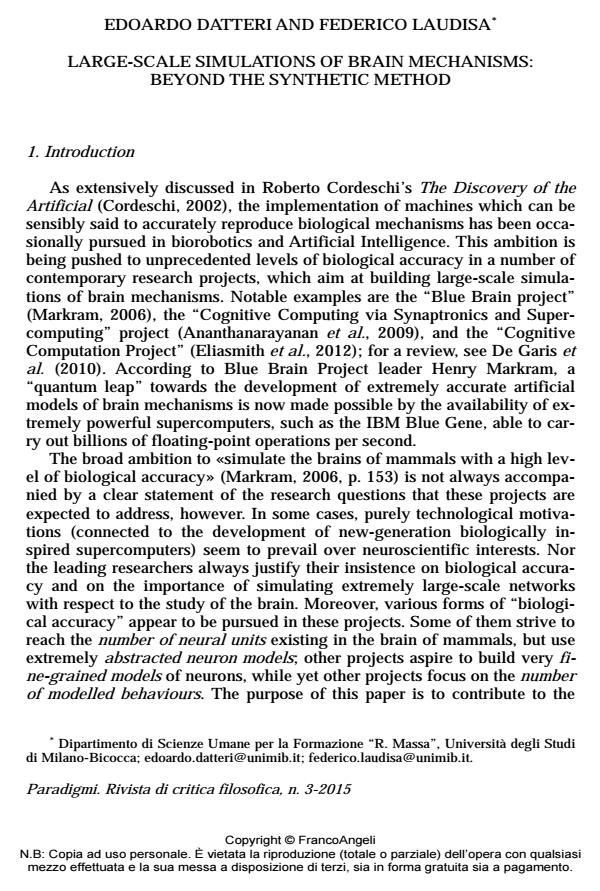Large-scale simulations of brain mechanisms: beyond the synthetic method
Titolo Rivista PARADIGMI
Autori/Curatori Edoardo Datteri, Federico Laudisa
Anno di pubblicazione 2016 Fascicolo 2015/3
Lingua Inglese Numero pagine 24 P. 23-46 Dimensione file 230 KB
DOI 10.3280/PARA2015-003003
Il DOI è il codice a barre della proprietà intellettuale: per saperne di più
clicca qui
Qui sotto puoi vedere in anteprima la prima pagina di questo articolo.
Se questo articolo ti interessa, lo puoi acquistare (e scaricare in formato pdf) seguendo le facili indicazioni per acquistare il download credit. Acquista Download Credits per scaricare questo Articolo in formato PDF

FrancoAngeli è membro della Publishers International Linking Association, Inc (PILA)associazione indipendente e non profit per facilitare (attraverso i servizi tecnologici implementati da CrossRef.org) l’accesso degli studiosi ai contenuti digitali nelle pubblicazioni professionali e scientifiche
Nel panorama della ricerca neuroscientifica contemporanea figurano alcuni progetti di ricerca che si propongono di realizzare simulazioni a larga scala dei meccanismi cerebrali caratterizzati da livelli di accuratezza mai raggiunti finora. In questo articolo sosterremo che il contributo teorico e sperimentale atteso da questi progetti simulativi non si limita a quello offerto dal cosiddetto "metodo sintetico" spesso adottato in Intelligenza Artificiale e in biorobotica. Sosterremo inoltre che tali progetti, al di là dell’obiettivo comune di simulare i meccanismi cerebrali, perseguono ambizioni modellistiche concettualmente distinguibili l’una dall’altra, che corrispondono a varie possibili interpretazioni della nozione di "accuratezza biologica". Tra esse troviamo l’ambizione (i) di modellizzare livelli di analisi estremamente "bassi" nella gerarchia di scomposizione meccanicistica; (ii) di simulare reti composte da numeri molto elevati di unità neurali; (iii) di realizzare sistemi dotati di repertori comportamentali molto ricchi; (iv) di simulare modelli "complessi" delle unità di base di cui sono composte le reti; (v) di incorporare le migliori teorie correntemente disponibili sulla struttura e sulle funzioni del sistema nervoso. Solleveremo alcune questioni fondazionali relative al senso di queste ambizioni nel quadro dei vari ruoli che le simulazioni possono svolgere nella ricerca neuroscientifica
Parole chiave:Accuratezza biologica, Metodo sintetico, Metodologie simulative nelle neuroscienze, Modelli nelle neuroscienze, Neuroscienze computazionali, Simulazioni a larga scala del cervello.
- On the Cognitive, Ethical, and Scientific Dimensions of Artificial Intelligence Edoardo Datteri, pp.205 (ISBN:978-3-030-01799-6)
Edoardo Datteri, Federico Laudisa, Large-scale simulations of brain mechanisms: beyond the synthetic method in "PARADIGMI" 3/2015, pp 23-46, DOI: 10.3280/PARA2015-003003